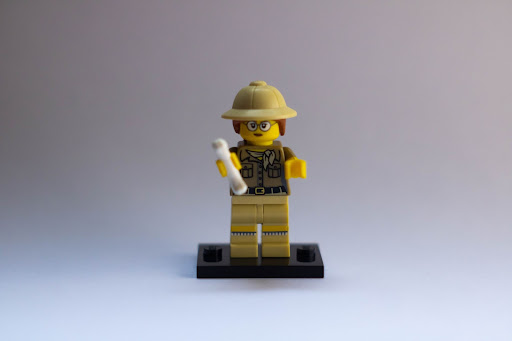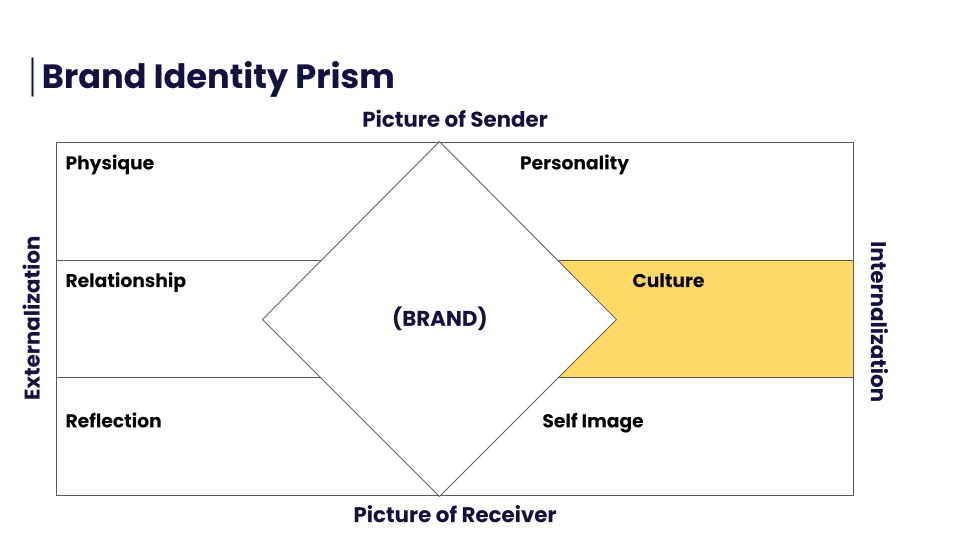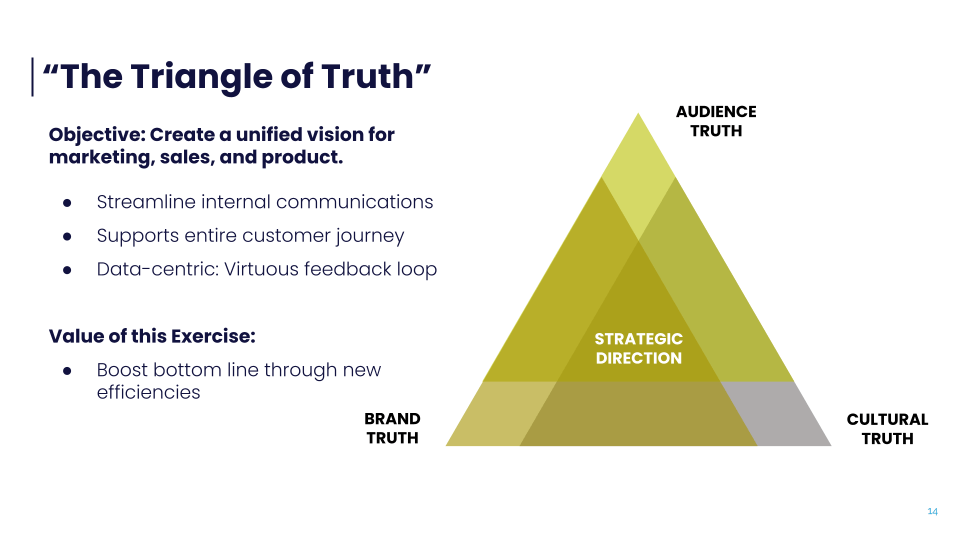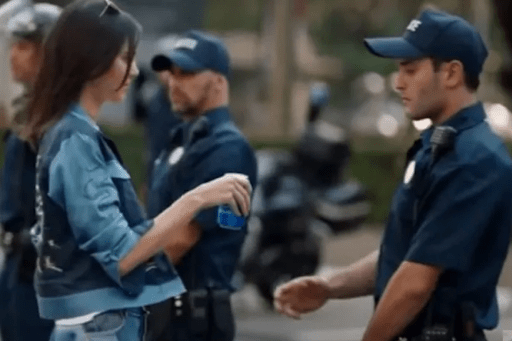
Destination Marketing: Boost Visitor Revenue With Cultural Anthropology
“It is not the smartest or the strongest that survive, but the most adaptive.” -Charles Darwin
Summary:
Most small to mid-sized destinations are missing out on prospective visitor revenue, and they know it. I’ve never once had a conversation with a DMO or edev division that hasn’t started with them asking, “What are we overlooking?”
Data? Messaging? Visitor experience? The answer is never just one thing – BUT – a part of the answer is always: “Cultural Anthropology.”
If that makes you raise an eyebrow, I get it. Most people hear the word “anthropology” and they picture an academic in cargo shorts and sunblock, traveling the world to study ancient campfire songs. What does that have to do with destination marketing?
 Marketing professional, seen in her natural habitat.
Marketing professional, seen in her natural habitat.
Well, read on! We’ve developed some simple, anthropology-based marketing exercises (included below) that can help you identify missed opportunities for revenue while painting a more complete picture of your audience to help inform your visitor strategy.
In this article:
- What is cultural anthropology, and what does it have to do with marketing?
- Exercise #1: “The Triangle of Truth”
- Nerdy words & phrases to add to your marketing vocabulary
- A cautionary tale: the biggest cultural misfire in marketing history
- Exercise #2: New Dimensions for Your Audience Profile
- Exercise #3: Cross-Cultural Experience: A New Value Proposition for your Destination
I. What is Cultural Anthropology, and What Does it Have to Do with Marketing?
For the moment, let’s set aside the “sunblock and cargo shorts” version of anthropology. What does this have to do with what we are actually trying to accomplish (bring in more visitor revenue)?
Where’s the overlap?
- The science of marketing: creating value for a certain group of people
- Cultural anthropology: studying the values, beliefs, attitudes, and ideals of a certain group of people
So, it’s all about creating more value for your target consumer. But what is so special about Cultural Anthropology, and how is it different from a more traditional approach to marketing?
A traditional approach finds intersection between two points:
- The wants, needs, and behaviors of the audience/consumer
- The value proposition of the brand

Basic common sense, right? For our first few years at CDA, this is the high-level model we used to develop brand strategy. After all, since the digital revolution, there are more consumer data sets available than ever before.
But something key is missing here. What happens when we add just one word to the equation:
- The CONSCIOUS wants, needs, and behaviors of the audience/consumer
- The value proposition of the brand
The word is “conscious.” That’s what’s limiting your results. This approach looks at media habits, purchase considerations, website activity, etc – but it ignores the many subconscious factors that impact visitation and spend.
That’s where Cultural Anthropology can fill the gap. If marketing is all about communication between brand and audience, then culture represents the context in which that communication takes place. It’s an essential third dimension for strategy, which is why you often see it in branding exercises like the Brand Identity Prism:

Cultural Anthropology represents the unspoken, universal truths that underpin the entire brand/audience relationship:
- Visual/Verbal Associations (pop culture, stereotypes)
- Language/Voice/Aphorisms/Slang
- Beliefs, Values, Ideals
- Relationship With
- Music
- Food
- Work
- Money
- Technology
- Family Structures
Okay, but what does this have to do with bringing in more tourists in the midweek or off season?
Cultural Anthropology provides destination marketers a more complete way to look at your relationship with visitors, and identify missed opportunities for revenue in two ways:
- Redefine Your Audience Personas
- Redefine Your Value Proposition
Example #1: Major Destination
We’ll start out with an example from a major destination, to see how this plays out on a bigger scale.
One of the most well-known travel campaigns of the past decade has got to be Travel Oregon’s recent “Only Slightly Exaggerated”
Ask yourself, why is this campaign so successful? Because it used culture to redefine its audience and value proposition.
Some cultural truths about Travel Oregon’s audience:
- “Travel represents an escape from reality.”
- “Art & creativity are a fundamental part of being human”
- Key values of freedom, wellness, whimsy
- Tremendous value in nostalgia and the idealization of childlike wonder
And of course there is the obvious iconography of Miyazaki-style animation, calling to mind whimsical childhood films like My Neighbor Totoro.
The end result is a campaign that makes the targeted visitor feel a much deeper personal connection to the destination.
Compare it to the approach you’d get with classical marketing theory, which just asks you to look at:
- Price
- Packaging
- Branding
- Environment
- Psychology
You might get a good campaign that way. Maybe. But as a strategic process, it’s like flying a jet with one working engine. Worst of all, it makes it really hard to differentiate your destination from similar locations. Can the average traveler really distinguish between a forest in Oregon and one in Washington?
Try it Yourself:
Which of these is Oregon?
- A
- B
For the record, it’s A. But you get my point.
Example #2: Smaller Destination
At the start of the Pandemic, our agency was tasked with creating a travel campaign for Visit Benicia, a small but charming waterfront destination in the San Francisco Bay area.
While Benicia offers no shortage of shopping, dining, and cultural attractions, an “events and shopping” approach was obviously off the table in the summer of 2020.
Instead, CDA looked at a core cultural truth of Benicia’s local San Francisco audience:
“Mental & physical wellness are interconnected”
The result was this small destination’s award-winning “Great Escape by the Bay” campaign, which strategically focused on promoting day-long wellness-related itineraries that combined safe & rejuvenating outdoor shopping & dining with outdoor activities.
The campaign surprised everyone, driving significant year-over-year improvement vs. recent pre-pandemic years in terms of media coverage (including numerous earned national placements and placements with Visit California), influencer & journalist visits, and overall engagement with marketing content.
What’s more, many of the small, locally-owned businesses that tended to die off during the pandemic actually thrived in Benicia. The projected hit to sales tax revenue was far less than feared, and many business owners expanded operations and opened additional locations within the city’s downtown area by early 2022.
II. Exercise #1: The Triangle of Truth
Let’s start with a very easy tool to put all this talk into action for your destination.
We call this exercise “the Triangle of Truth,” and it’s how we like to start the conversation after we’ve finished our initial audit, research, and gap analysis for a destination:

To start, ask your organization to privately brainstorm some examples of the following three things. There are no wrong answers here, the goal is to be comprehensive:
Quick tip: If you have really diverse & different target visitor personas, you may want to do this exercise multiple times.
- Audience Truths: “I am” statements from the point of view of your target visitor. Includes fears & stressors, pain points & challenges, media habits, day-to-day behaviors, shopping habits, personal finances. Try to include any research or audience data you have to date.
- Brand Truths: The authentic qualities, features, and sell points of your destination. Includes both the tangible features (i.e. “Michelin Star Restaurant”), and the intangible features (i.e. “a perfect place to reconnect with old friends”)
- Cultural Truths: List the universal, subconscious factors influencing travel for this target audience. Includes concepts like the broader role of travel in life as a whole, the role of money as a luxury/necessity/status symbol, the role of technology, social media, and mobile phones when it comes to travel, the significance of travel to the family structure, and preconceived ideas or prejudices visitors may have
Combine everything and share it with the organization. This should be fairly eye-opening moment, and should expose some areas where you didn’t realize your team wasn’t seeing eye-to-eye on things.
The next step is to pare this list down to the essentials; the core qualities that really define your destination, your visitor, and your relationship with them.
At this point, you’ve already got your stakeholders and decision makers on the same page, speaking the same language. You’re on your way to more streamlined & consistent communications for your destination.
The last step is to workshop a single, unifying strategic direction. A statement that finds meaningful & authentic intersection between your key audience, brand, and cultural truths. The foundation of your marketing, product, and sales efforts for the destination.
Steps to implement:
- Everyone on your team lists audience truths, brand truths, & cultural truths
- Combine these ideas into one master list
- Pare it down to the fundamentals
- Define a strategic direction
III. Nerdy Words & Phrases to Add to Your Marketing Vocabulary
“Ethnocentrism”
This is probably the single most useful consideration from a marketing perspective. For small destinations, in particular, the marketing team is often composed of longtime residents; people who know everything about everyone in town. The benefit of this setup, is there’s tremendous built-in knowledge about the destination and established community relationships to draw from.
The downside? Lack of perspective. Cultural Anthropologists often discuss the concept of “ethnocentrism” – in other words, applying your own personal bias and experience to another group.
In the case of small to mid-size destinations, there is often misalignment in how the destination is viewed by visitors vs. locals. The result is a campaign that reflects the values of the people telling the story, not the people hearing it.
“Participant Observation”
This refers to the practice of immersive & authentic communication with the group you wish to learn about. For a marketer, it represents the opposite end of the spectrum from buying third party data sets.
At CDA, our approach to participant observation means directly interacting with and even recruiting from our clients’ target consumer. We put together multi-generational and multi-cultural workshops & focus groups, and maintain a creative network of people from different backgrounds to make sure our videos, messaging, and client strategy reflect the authentic voice and values of our target – and not just ourselves.
“Symbolism”
There are various words & images we all instinctively associate with cultural concepts. A ring means marriage, etc. For marketing, symbolism forms a sort of visual and verbal shorthand, allowing you to communicate ideas and identity instantly to your audience.
For example, look at the very deliberate use of Miyazaki-style animation in the Travel Oregon campaign. Or consider how an image of a motor scooter for a metropolitan Indian audience holds a different symbolic meaning than the same image to a rural American audience (convenience vs. play).
“Cultural System”
This represents the 3-part structure of the culture you are considering:
- Infrastructure
- Social structure
- Superstructure
Infrastructure (money, work, and economics): Is your target visitor looking for a yearly vacation from work? A business trip? Or a “workation” that blends the two concepts? Do they view money as a source of luxury or a source of status?
Social structure (family, gender, sexual identity, and age): Key to understanding who makes and informs decisions on where to visit, as well as what they hope to achieve during their visit.
Superstructure (ideology & worldview): What is the visitor’s relationship with police, organized religion, politics?
IV. A Cautionary Tale: The Biggest Cultural Misfire in History
Fans of Amazon Prime’s hit show The Boys no doubt got a dose of deja vu recently, when an episode brilliantly parodied Pepsi’s infamous 2017 ad starring Kendal Jenner and a wildly tone-deaf representation of the Black Lives Matter movement.

If you take culture out of the equation, it seems like a perfectly good commercial. It stars a popular, attractive celebrity, the energy is youthful and on-brand, and it makes the product look delicious and refreshing. It doesn’t even make any explicit political commentary, one way or the other.
Yet it goes without saying that this ad was a complete train wreck. The brand pulled it after one day, and the lasting impact of the brand’s value to highly-political young people is incalculable. Why? Because it failed to factor in the cultural significance of its symbolism and subject matter. It was ethnocentric and told from the brand’s point of view. It ignored all the subconscious cultural factors involved in the brand/audience relationship.
No matter where a viewer stood on the issue politically, they found the ad off-putting and offensive.
Similarly, Jeep’s 2021 Super Bowl ad went down poorly with its politically divided audience for seeming to suggest that its brand somehow represented the end of America’s partisan political struggles. When Springsteen had a DWI soon after the big game, Jeep opted to pull the multimillion dollar ad from circulation.
V. Exercise #2: A New Framework for Building Your Audience Persona
You’ve probably already got a template picked out for building your target audience personas. If you Google it, there are more than 3 million results. But how complete is that template?
It probably includes essential surface-level factors like age, purchasing power, pain points, and media habits, but I’m willing to wager it leaves out some key cultural factors.
This exercise is simple, just fill out this handy checklist of audience dimensions you may have overlooked:
How does your persona feel about:
- The Primary Role of Money (choose one): Necessity, Luxury, Status
- Their Ideal Family Structure Looks Like:
- Freedom vs. Safety:
- Relaxation vs. Excitement:
- Comfort vs. Adventure:
- Important symbols, archetypes & stereotypes:
- Heroes:
- Food as Fuel vs. Food as Art:
- Gender Roles: Traditional or Progressive?
- Years They’re Nostalgic About & Why?:
- Travel & Work:
- Travel & Family: Memories, bonding, milestones, traditions
- Travel Boosts Social Status: Yes or No?
- Significance of Travel (choose one): Reward, Rejuvenation, Personal Growth
VI. Exercise #3: Cross-Cultural Experience: A New Value Proposition for Your Destination
What is the value of travel? On the surface, the answers are obvious:
- A chance to take a break from everyday challenges
- New & exciting experiences I can’t get at home
- More affordable & enjoyable business trips
But those are all conscious factors in the decision. What about from the perspective of cultural anthropology? There is one thing every destination has in common, including yours: it offers visitors a chance to immerse themselves in another culture.
The conscious question a destination has to answer is, “What are you going to do?” The subconscious question is, “Who are you going to become?”
It may sound like this question is only relevant to remote & exotic destinations, far removed from the visitor’s day-to-day situation, but it applies even to destinations that cater to a local day-trip audience.
Everyone has a restaurant near their home. Everyone has a cute place they like to shop. When they visit your destination, they are stepping into another culture – now let’s define how!
When your target visitor makes the effort to plan a day trip or book an overnight, who are they going to become?
Sensory
- What sort of fashion will they wear?
- What sort of music will they want to listen to?
- What sort of food will they want to try?
- Where will they sleep?
Social
- How will they bond with family?
- How will they celebrate romance?
- How will they bond with friends?
- How will they bond with the locals?
Emotional/Spiritual
- What new ideas will they be exposed to?
We Love to Chat About This Stuff
There is no silver bullet to driving incremental revenue for all destinations, but there are definitely quick & cost efficient ways to identify some areas of improvement.
Give these exercises a try, and let us know if it doesn’t shed some light on new areas to explore with your marketing. We’re always happy to hop on a call and discuss what your destination is looking to achieve, and to share some examples of the cost-efficient processes we’ve developed to help small to mid-size “hidden gems” increase TOT and sales tax.

